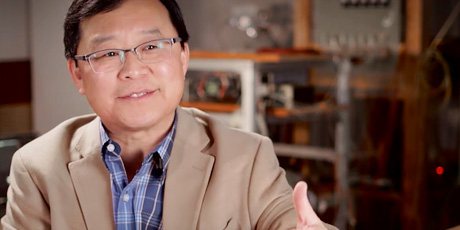Space Study
Anticipating Aircraft Fatigue
NASA project aims to predict the lifespan and strength of rotor spars

Determining when large parts of aircraft will fatigue or develop damage is key to the aeronautics industry for both safety and economic reasons. That's why NASA has turned to the UTA Research Institute (UTARI) to develop advanced computational techniques to predict the lifespan and strength of rotor blade assemblies, known as rotor spars.
"Aerospace companies are constantly looking for ways to design and produce next-generation aircraft more efficiently," says UTARI Research Scientist Endel Iarve, who is leading the study. "It is very exciting to contribute to this goal by developing computational methods capable of simulating material behavior and reducing the amount of testing."
The three-year, $1 million project is funded through NASA's Aeronautics Research Mission Directorate in alignment with the Advanced Composites Project, which seeks to provide safe, sustainable domestic and international aviation.
The study will use the Discrete Damage Modeling (DDM) framework to predict damage and fatigue in the composites. With DDM, multiple individual damage events, such as cracks and delamination, are introduced into the model through the displacement discontinuities they create.
Additionally, the researchers will look for ways to minimize the timeline of developing and certifying state-of-the-art composite materials and structures. They hope this will ensure that the components are more competitive in commercial aircraft.
Dr. Iarve, a member of the American Society of Mechanical Engineers, the American Institute of Aeronautics and Astronautics, and the American Society for Composites, joined UTA in 2015 as an addition to the newly created Institute for Predictive Performance Methodologies. The Institute is part of the University's two-pronged strategy to increase research and engage corporations in finding practical uses for the faculty's discoveries.
"Iarve's research uses data-driven discovery to create valuable models that will predict the lifespan of larger aerospace components," says Mickey McCabe, UTARI executive director. "It delivers a valuable tool needed by every aerospace manufacturer."
State Sen. Kelly Hancock (R-North Richland Hills) agrees, and says that the NASA project is evidence of the University's increasing contributions to the aerospace industry: "UTA is becoming a worldwide leader and a research partner with the aviation industry in establishing benchmarks that will have a permanent impact on computational aeronautic manufacturing."

















